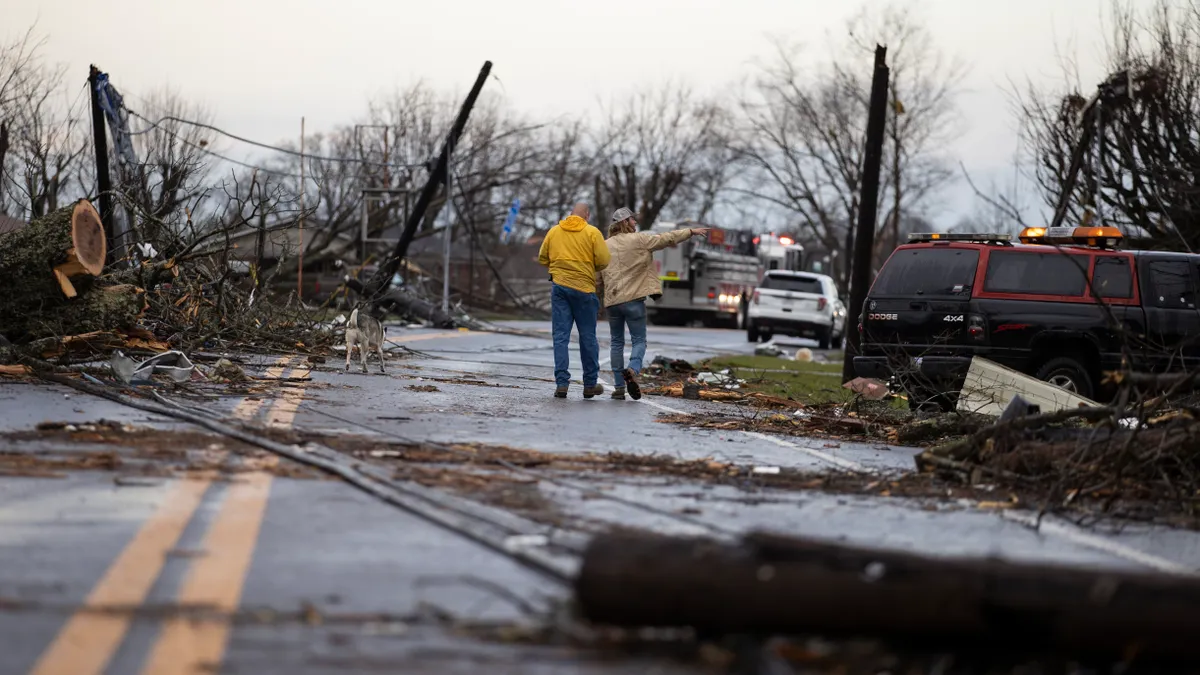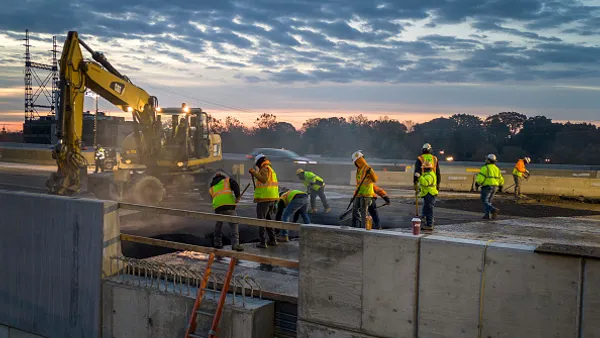Dive Brief:
- The American Society of Civil Engineers has released a new standard for protecting buildings from tornado damage, the society announced on Dec. 1.
- The standard is the first of its kind in the world. It offers guidance designed to protect infrastructure from tornadoes ranking from 0 to 2 on the Enhanced Fujita Scale, which translates to winds ranging from 40 mph at the bottom of EF0 to 157 mph at the top of EF2. In the U.S., approximately 80% of tornadoes are EF0 to EF1 strength.
- The standards aren't meant for residential construction, but rather for critical infrastructure such as hospitals and fire stations which are needed immediately after a disaster, said Don Scott, the chair of the ASCE-7 Wind Load subcommittee. Additionally, storms ranked EF-3 or higher also don't fall under the guidelines, due to the infancy of the research. Scott said that once enough research is complete, more severe storms can also be accounted for.
Dive Insight:
Scott told Construction Dive that the idea came out of cooperation between the National Institute of Standards and Technology (NIST) and the ASCE following the Joplin tornado disaster in 2011, which killed 161 people along a 6-mile path and caused almost $3 billion in damages to the city of Joplin in southwest Missouri.
Powerful tornadoes have been in the news recently as well. Earlier this month, a massive twister ripped through western Kentucky, leaving thousands without homes and power and 77 dead, with fast enough wind speeds to rank anywhere between an EF3 and an EF5.
Scott was adamant that the decision to make the standard was not driven by climate change concerns, but rather the loss of life from tornado outbreaks. However, Scott told Construction Dive that the ASCE would be working with climate scientists in the future to determine if any construction standards should be changed to account for increasingly extreme weather.
"These are first in the world standards for tornado design, and the research will continue and be able to expand them and clarify them in the future," Scott said.
A range of recommendations
Some of the changes the new standard requires include making windows impact-resistant, as seen in buildings in areas with hurricanes. Scott also emphasized that establishing a continuous load path through the building to counteract any pressure that the tornado inflicts vertically on a structure is an incredibly important part of the standard.
Another recommendation is using steel clips or straps instead of toenail trusses on buildings. Those clips will be attached to studs in the walls, which will in turn be anchored into the foundation of the building, providing support to deal with strong winds and pressure that tornadoes create.
"Tornadoes previously were beyond the probabilities we normally design for," said J.G. Soules, the vice chair of the ASCE 7-22 committee in the release. "But more study was done, and we found that tornadoes were undercounted to the point where they should now be considered. We're not designing tornado shelters with ASCE 7; we're simply designing for somewhat higher wind loads in certain regions of the country. But it is important to do."
Next year, the standard will be up for consideration to be entered into Chapter 16 of the 2024 International Building Code. States and municipalities in tornado-prone areas can add it to their own building codes and decide what provisions they'll use from the standard in their own requirements.














